#Fairy Tale Ballet
Text
Dazzling on stage with this incredible Tinkerbell-inspired costume for your modern dance performances! Enter a world of magic and enchantment with our unique designs that capture the magical essence of this iconic character
¡ Deslumbrando en el escenario con este increíble vestuario inspirado en Campanilla para tus presentaciones de baile moderno! Entra en un mundo de magia y encanto con nuestros diseños únicos que capturan la esencia mágica de este personaje icónico
#Tinkerbell ballet#tinkerbell costume#Enchanted Tutu#Ballet Fantastic#Fairy Tale Ballet#tinkerbell Style#Fairy Dance#Fairies On Scene#Charm In Movement#Magic On Stage#Dance With Magic
0 notes
Text
*by live theatre i mean plays, musicals, operas, ballets, concert versions of musicals, staged readings, & things of that nature. EDIT: YES this includes amateur, local, kids, high school, & community theatre. almost every show i've seen has been local
if you want, list the names of the shows you've seen in the tags!
#(if you saw this before no you didnt. i wanted to add more options)#anyways! very curious about how much live theatre people on here see.#personally i've 22 shows? those being: sleeping beauty (ballet). mary poppins. the lion king. the sound of music. once on this island.#little shop of horrors. mamma mia! chess. annie. music man jr. jesus christ superstar. joseph and the amazing technicolor dreamcoat.#something rotten! sam's room. the blender. bad auditions by bad actors. the 10 worst breakups of all time. drugs are bad. fairy tale court.#peter and the starcatcher. a christmas carol. & robin hood! all of those have been local/community except lion king ^_^#(yes i also redid this because i forgot about robin hood & sleeping beauty...)#musings
9K notes
·
View notes
Text
Source
#aesthetic#swan#swans#lake#swan lake#light academia#romantic academia#classic academia#princesscore#ballet#balletcore#fairycore#fairytale#fairytales#fairy tales#fairy tale#nature#naturecore#wholesome#positivity#aesthetic academia#gardencore#garden#baby#baby animals#animals#cute
331 notes
·
View notes
Text
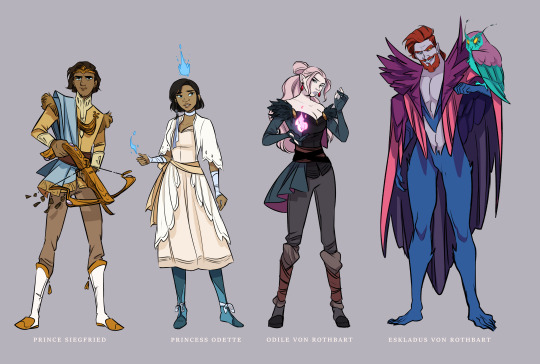

Just realized I uploaded this on my other socials but not on here. A couple years ago, I was really interested in re-imagining Swan Lake as a comic, but never got far with it and put it to the side. The story found its way back to me, and I'd love to have another go at it and work it into a graphic novel after I publish my debut graphic novel trilogy KLOUD 9 (coming in 2025!)
These are some rough character designs I was playing around with for my take on the Swan Lake characters. I wanted my Odette to be a magical Filipina princess, as my dream of helping work on the first Filipina Disney princess movie seems too far off at this point in my career. So I don't really want to wait, and I'm just making my own haha!
--
Check out more of my work on other platforms!
My Instagram -- My Twitter
#characters#ocs#original characters#designs#character art#character designs#oc artist#oc artwork#odette#siegfried#black swan#white swan#prince siegfried#princess odette#swan#swan lake#swan maiden#ballet#peter tchaikovsky#tchaikovsky#ballet art#fairy tale#fairy tale art#fairy tale illustration#fairy tales#fairytale#princess#odile#rothbart#von rothbart
312 notes
·
View notes
Text




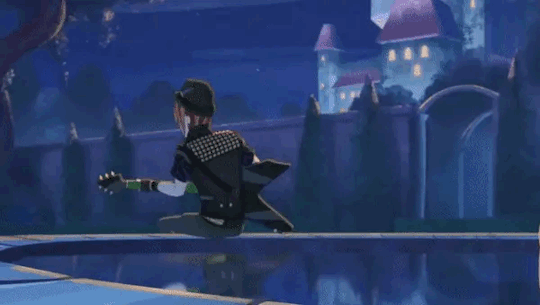

Fairy Tale: Swan Princess
#princess#swan princess#swan lake#ballet#odette#the swan princess#princess tutu#ahiru arima#duchess swan#World Masterpiece Fairy Tales: Swan Lake#Russian swan lake
305 notes
·
View notes
Text
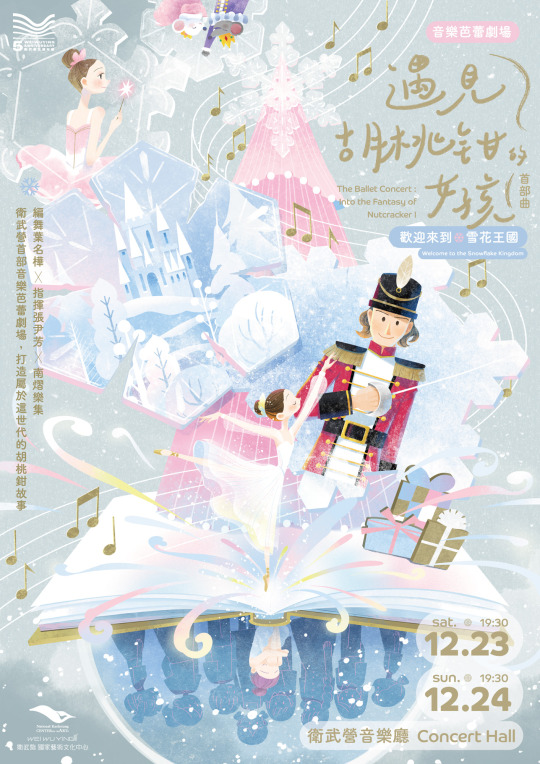
Illustration for ballet in National Kaohsiung Center for the Arts
#illustration#drawing#illustrator#painting#artists on tumblr#artist on tumblr#art#digital art#cute#little oil art#minayuyu#ballet dancer#ballet#nutcracker#fairy tales#dream#snow queen#castles#little girl
367 notes
·
View notes
Text
Barbie of Swan Lake: Odette's Swan Princess —Aesthetic

Princess Odette
In the end, as thanks for saving the Enchanted Forest, Odette is crowded a Swan Princess. Additionally, her father and Prince Daniel are discussing wedding plans. Thus, Odette becomes a future princess to their human kingdom. Despite all this, she remains humble, saying she achieved this because a friend once told her, "You’re braver than you think."
#odette#barbie of swan lake#barbie#barbiecore#art#swan princess#white swan#ballet#fairytale#fairy tale#princesscore#naturecore#royalcore#forestpunk#forestcore#aesthetic#moodboard#swan lake#medieval#pastelcore
31 notes
·
View notes
Text










° Cinderella in ballet 🩰 °
37 notes
·
View notes
Text
A Fairy Tale Rabbit Hole

Snow White and the Seven Dwarfs is the movie that it started it all for Disney Animation and it's the most influential fairy tale movie ever. Its tropes and its tone still inspires fairy tale media to this day, either as parodies, or homages.
But what less people know is that Walt Disney was inspired to make this movie because of a peculiar silent movie that he watched when he was a teenager.
That movie was Snow White from 1916. Its writer, Winthrop Ames, adapted it from his own Broadway play. An example of American fairy tale theater.
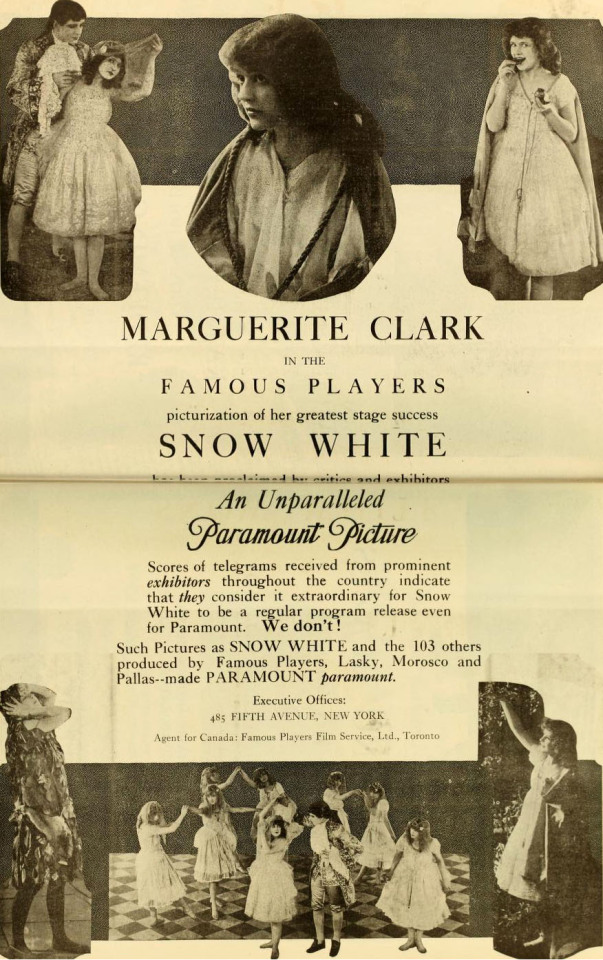
This kept me thinking.
The Wizard of Oz is one of the most iconic fantasy films of all time, and it was made in direct response to Snow White. What people don't know is that the scene where Glinda saves the gang from the deadly poppies with a snowstorm came straight from a fairy tale musical from 1902. It came from The Wizard of Oz, a fairy tale musical "extravaganza", with direct input from L. Frank Baum, only two years after the original novel.

Actually, stage musicals seem to take a slight part in the creation of Oz. The Marvellous Land of Oz, the sequel, seems to be inspired by this stage culture. General Jinjur and her army dresses like chorus girls, Ozma/Tip may be inspired by the crossdressing in children roles, and this was the book's dedication:
"To those excellent good fellows and comedians David C. Montgomery and Frank A. Stone whose clever personations of the Tin Woodman and the Scarecrow have delighted thousands of children throughout the land, this book is gratefully dedicated by THE AUTHOR"
These were actors of the 1902 stage show.
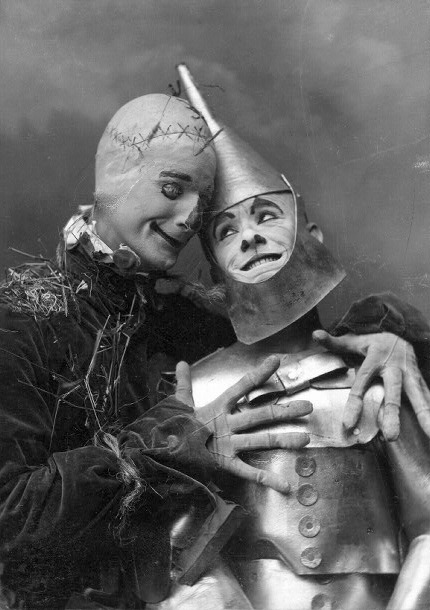
Two years later, on 1904 Peter and Wendy premiered. This play is also one of the most famous children stories ever. Walt Disney himself acted as Peter in a local production of it and Tinkerbell quickly became a mascot for the studio.
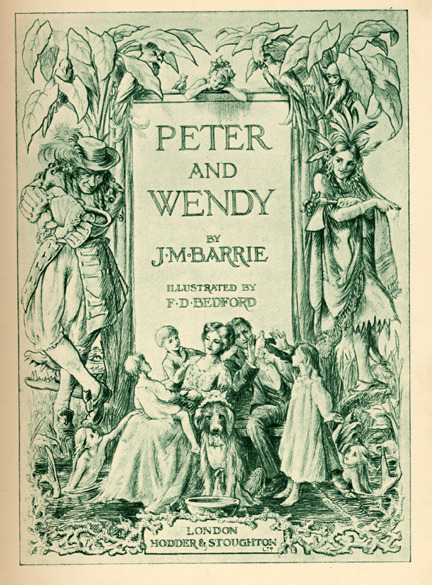
This all led me to think more about fairy tale theater specifically.
Since the ending of the 18th century and through the 19th century, a genre of stage show developed through Europe. It was mostly comedic and light-hearted, mainly inspired by fairy tales, and it was geared towards children and families. It involved lavish fantasy spectacles told through operas, ballets, and what we today would call "musical theater".
It had many different names and variations depending on the country.
On England, it evolved through the pantomimes and it became a Christmas tradition.
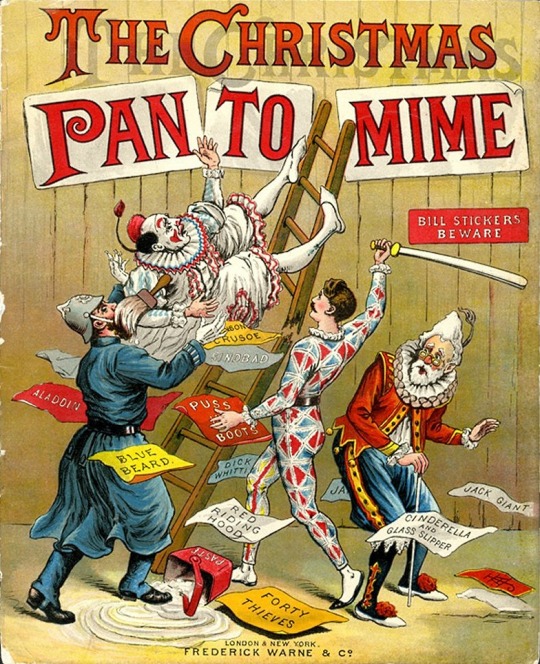
In Russian, it was mainly through ballet, called the ballet-féerie, often considered a lower-class, more commercialized entertainment than traditional ballet. Tchaikovsky's Sleeping Beauty and The Nutcracker are among some of them. Sleeping Beauty would later inspire Disney's telling of the story.
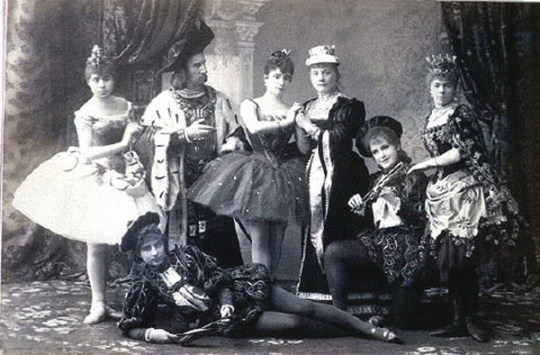
In France they were called Féerie, and it was a mix of music, dancing, pantomime, acrobatics, and stage effects. It influenced the development of burlesque, musical comedy and film.

From Wikipedia:
With his 1899 film version of Cinderella, Georges Méliès brought the féerie into the newly developing world of motion pictures. The féerie quickly became one of film's most popular and lavishly mounted genres in the early years of the twentieth century, with such pioneers as Edwin S. Porter, Cecil Hepworth, Ferdinand Zecca, and Albert Capellani contributing fairy-tale adaptations in the féerie style or filming versions of popular stage féeries like Le Pied de mouton, Les Sept Châteaux du diable, and La Biche au bois. The leader in the genre, however, remained Méliès,[37] who designed many of his major films as féeries and whose work as a whole is intensely suffused with the genre's influence.[38]
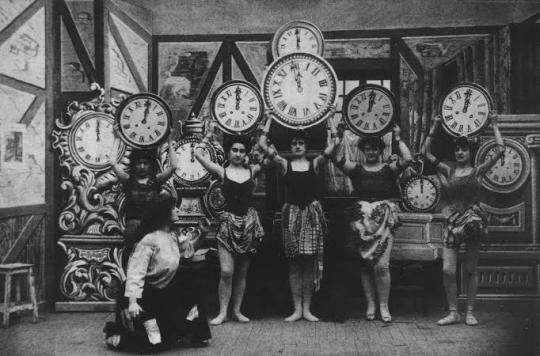
Once you realize a huge chunk of fairy tale media has roots in family friendly stage shows from 19th century, a lot of it started making sense.
The focus on romance, the focus on damsels in distress, prevalence of lighter tones, the everlasting connection to music and dance.
They may be the main reason why some fairy tales are more famous than others. Some became source material for a continuous stream of operas, operettas, musical extravaganzas, ballets, plays, and others simply not.
And besides the Victorian Era storybooks that bowdlerized fairy tales for children, I think this whole genre of the theater was responsible to firmly establish fairy tales as a child friendly media, decades before Disney ever released Snow White to cash in that nostalgia.

If you have something to add or if I just got something wrong, feel free to correct me.
@ariel-seagull-wings @princesssarisa @adarkrainbow @the-blue-fairie @theancientvaleofsoulmaking @natache @tamisdava2 @thealmightyemprex
57 notes
·
View notes
Text
If there's any character from Sleeping Beauty from whose viewpoint I might like to write a poem or short fic, it would be one of the four princes from Act I of Tchaikovsky's ballet.
Other, later retellings of the tale have also given Sleeping Beauty a suitor before she succumbs to the curse, but those princes are usually portrayed negatively, as silly fops in contrast to the charming prince who ultimately wakes her. The four suitors in the ballet, on the other hand, are perfectly nice, handsome, gallant young men. Aurora dances the famous Rose Adagio with them, and while she doesn't choose one of them to marry, she seems to like them well enough. Yet after sharing that beautiful moment of dance with her, with every reason to hope that one of them will soon be her bridegroom, they have to witness her fall under the spell.
Aurora's finger-pricking doesn't happen in a secluded tower in Tchaikovsky's ballet. The evil fairy Carabosse comes to her 16th birthday feast disguised as an old beggar woman, and (depending on the production) either gives her a drop spindle as a gift, which she takes naïvely because she's never seen one before, or gives her a bouquet of roses with a spindle hidden inside. Then she pricks her finger and collapses in front of the whole court and all the party guests, including the four princes. In some productions, one of the princes catches Aurora in his arms as she falls, and when Carabosse jubilantly reveals her identity, many productions have the four of them rush at her with their swords just before she vanishes. Then, after the Lilac Fairy arrives to assure everyone that Aurora is only sleeping, not dead, and to put the King and Queen and all the rest of the court to sleep too, in some productions it's the four princes who carry Aurora into the castle to her bed.
Even though Aurora doesn't fall in love with any of those princes, they still share something meaningful. When Aurora enters, her music and dancing is all childlike exuberance and innocence. But in the grand Rose Adagio – one of the most demanding showcases for a ballerina – she comes into her own both as a dancer and as a young woman receiving courtship for the first time. Arguably, the dance she shares with the four princes serves as her coming-of-age moment, which prepares her for her ultimate marriage to Prince Désiré/Florimund a hundred years later.
Yet there's no happy ending for those four young men. They have to watch Aurora succumb to the curse, fail to take down Carabosse, and then learn from the Lilac Fairy that Aurora is lost to them, destined to sleep until another prince finds her long after they're all dead. All they can do is reverently lay her to rest, then go back to their own lands, presumably to tell the rest of the world what happened.
I'd like to imagine that Prince Désiré/Florimund is the grandson or great-grandson of one of Aurora's four original suitors. A few other adaptations have the Prince who wakes Sleeping Beauty be descended from an earlier suitor of hers, so I'll imagine that's the case in the ballet too.
#sleeping beauty#fairy tale#ballet#the sleeping beauty#pyotr ilyich tchaikovsky#the four princes#supporting characters
298 notes
·
View notes
Text
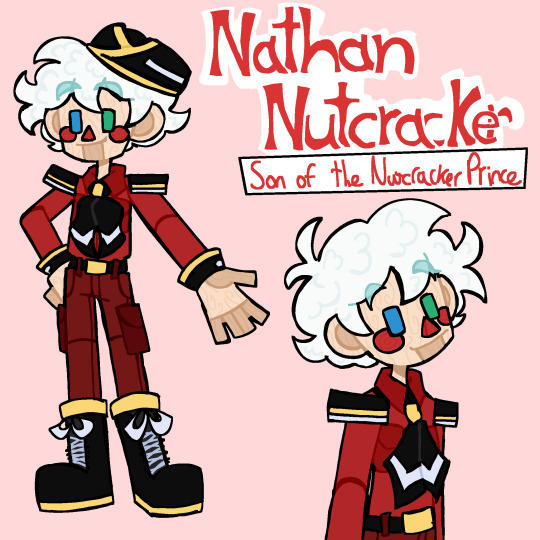


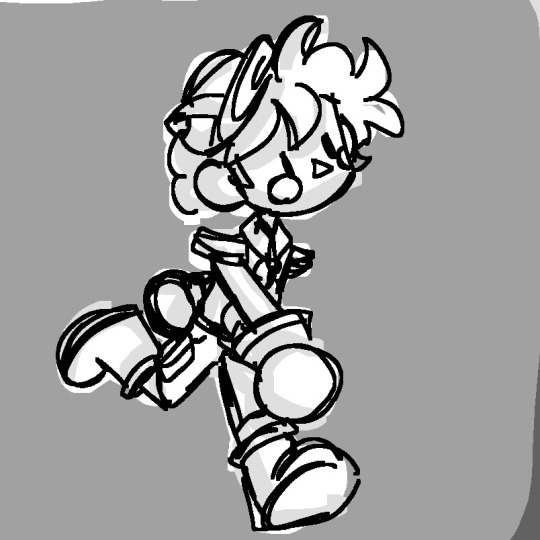


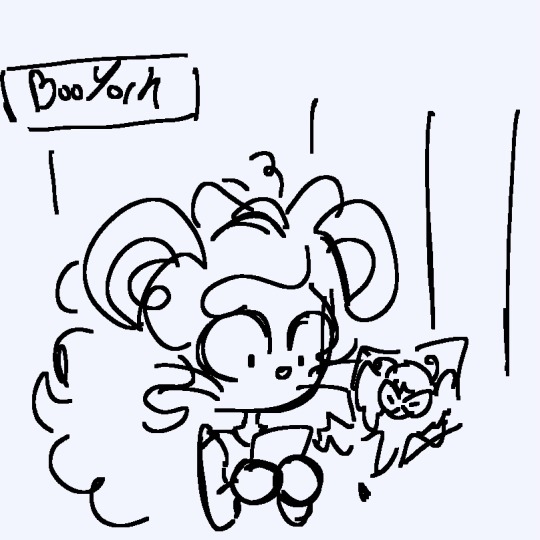
There’s a character in the books called Nathan Nutcracker and I wanted to make a design for him because I think Cedar deserves a friend who can relate to her
#gave him white hair cause the nutcracker prince has a cotton beard I wasn’t brave enough to give him a beard#his outfit is meant to look like a scout uniform because I wanted it to have the same vibes as a soldier uniform but like younger#I have a headcanon that because nutcracker dolls aren’t really made to move around his movements are rigid and he’s not very articulated#cedar on the other hand has very fluid movement but has trouble balancing and staying upright because she’s a marionette made for strings#I wonder if nate was made a nutcracker or was a human transformed into a nutcracker like in the original story#cause I kinda get the vibe that it’s the former#little fun fact the nutcracker ballet is an adaptation of a novella-fairy tale#so even though he’s probably based on the ballet version he still fits the fairy tale theme#I’m pretty sure nate is supposed to be really small in the books but I forgot so he’s just a short king here#also I think he’d have a pet wind-up toy mouse called kingsley#rotomart#ever after high#eah#nathan nutcracker#nate nutcracker#cedar wood#eah nathan#eah nate#eah cedar#cedar ever after high#nate ever after high#nathan ever after high#also mouscedes cameo#pinocchio#the adventures of pinocchio#the nutcracker#the nutcracker and the mouse king#rotomart eah
36 notes
·
View notes
Text
30 day moodboard challenge: 💖
Made by @scary-friend
Day Six: Favorite Fairy Tale
Swan Lake











🪷 🦢👑🦢 - 🦢👑🦢 - 🦢👑🦢 🪷
#moodboard#moodboard challenge#fairy tale aesthetic#swan lake#ballet#ballet aesthetic#swan aesthetic#swan princess#black swan#black swan aesthetic#moodboard aesthetic#aesthetic moodboard#princesscore#lovecore#love aesthetic#girlblogger#girlblogging#girljournal#girlhood#female hysteria#im just a girl#just girly things#gaslight gatekeep girlblog#girly tumblr#girly moodboard#girly stuff#pinterest girl#this is a girlblog#girl blogging#girl blog aesthetic
16 notes
·
View notes
Text
I was rethinking about how important the use of cultural details is when doing fairytale reinterpretations or adaptations. It is a way of adapting that people tend to forget due to some sort of general agreement that fairytales should escape any type of time-space setting and feel just like a "generic pseudo-medieval pseudo-European" world (except of course if they are set in modern day America, because for the US media the USA is, of course, a setting deemed "universal" enough that should speak to everybody... *cough cough* americanocentrism *cough cough*)
It was something I was already thinking about some times ago, ever since I discovered the Royal New Zealand Ballet's Hansel and Gretel, which has lots of very cool references to various states of German culture, ranging from cinema (the aesthetic of the setting, characters and special effects is meant to evoke the classic mute expressionist movies such as "Nosferatu" or "The Cabinet of Doctor Caligari")...
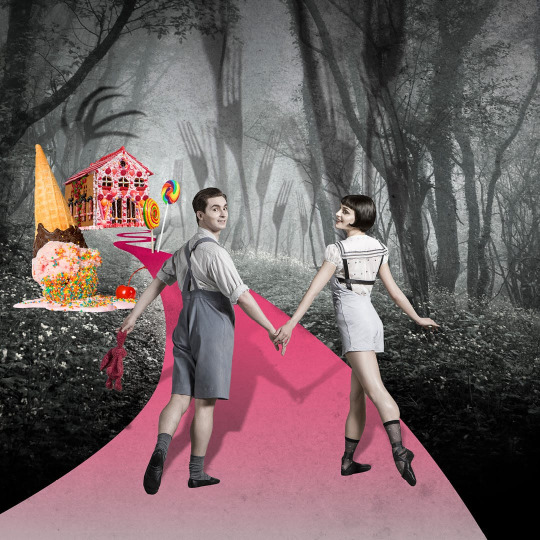
... to folklore (the show made the insanely clever decision of replacing the bird eating the crumbs in the forest with schnabelperchten brooming them away).
And more recently I have been looking into a 1930 black-and-white French movie called "Cinderella of Paris", that transposes/twists/parodies the Cinderella story within the context of the realistic 1920s Paris.
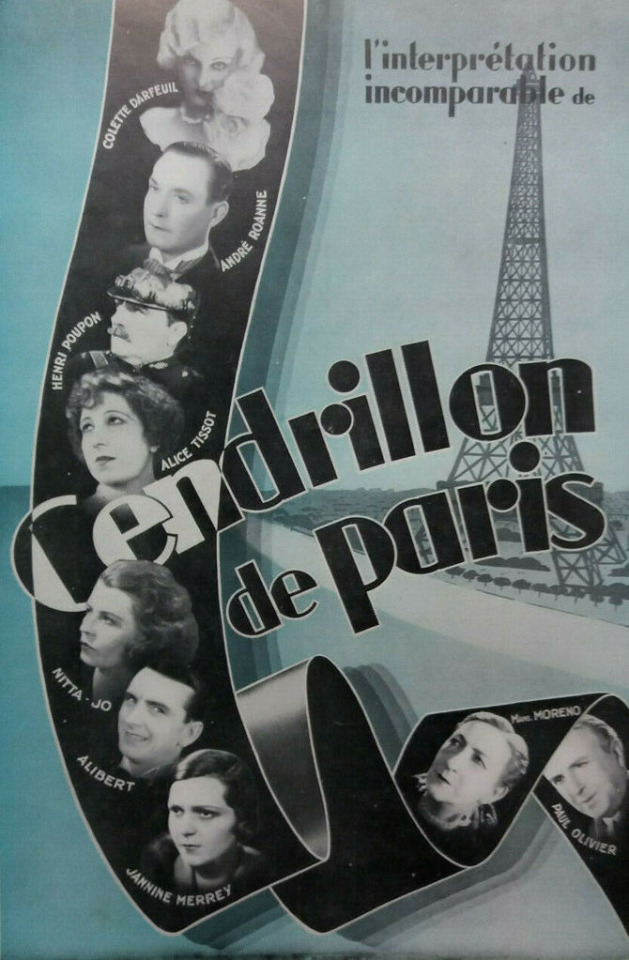
And the main ball, the equivalent of the titular Cinderella ball, is made into the Sainte-Catherine dance. Which is absolutely fitting and perfect for a Cinderella within an inter-war Paris. If you don't know, up until the mid-20th century, in France Saint Catherine's day was the time of a great popular ball/public dance whose entire purpose was to allow girls of 25 years old or more, yet without a male companion, to find a suitor/husband/boyfriend/fiancé. It was the big time to "solve the problem of the old maids", of which Saint Catherine was the patron - and it was THE big "love day" long before the overwhelming Americanization of Saint Valentine's Day.
All of that to say, I really love the inclusion of little cultural details and elements within fairytales retelling or transpositions - either of the original fairytale's culture, or of the culture in which the fairytale is transposed. Not only does it make the product quite cool, clever and/or interesting, but it also shows that you put a lot of thought into the tale's original setting and the point of moving up to another time period or geographical era. It is the opposite of just slapping a "That's X country" or "That's X time" sticker onto a fairytale without doing much more work.
#fairytales#fairy tales#fairytale adaptations#hansel and gretel#cinderella#cendrillon de paris#royal new zealand ballet#rnzb's hansel and gretel#royal new zealand ballet's hansel and gretel#fairytale transpositions
29 notes
·
View notes
Text
18 years of Barbie in the 12 Dancing Princesses🩰✨
🎥 Barbie in the 12 Dancing Princesses (2006).
🎶 Barbie in the 12 Dancing Princesses Theme, Arnie Roth.

#ladywatereton#barbie#barbie in the 12 dancing princesses#old barbie movies#barbie the movie#barbie princess charm school#barbie the princess and the pauper#barbie in the nutcracker#perioddramaedit#periodedit#regency period#period drama#period piece#perioddramasource#light academia#genevieve x derek#fairy tales#fairycore#fairy tail#fairy aesthetic#ballerina#ballet#12 dancing princesses#tumblr#aesthetic edits#halloween#2000s nostalgia#2000s movies#2000s#2000s aesthetic
9 notes
·
View notes
Photo


Reverie by Fifth District
#ballerina#ballet#fairytale forest#rainy#ethereal#my upload#silvaris#fairy tale#enchanting#fantasy#myth#forest#trees#woods#woodland#nature#princess#queen#lady#woman#maiden
110 notes
·
View notes
Text










The Red Shoes - dir. Emeric Pressburger and Michael Powell - (1948)
#the red shoes#film#classic film#criterion collection#ballet#emeric pressburger#michael powell#moira shearer#anton walbrook#marius goring#robert helpmann#1940s#1948#british cinema#ballerina#musical#hans christian andersen#fairy tales#fables#obsession#ambition
13 notes
·
View notes